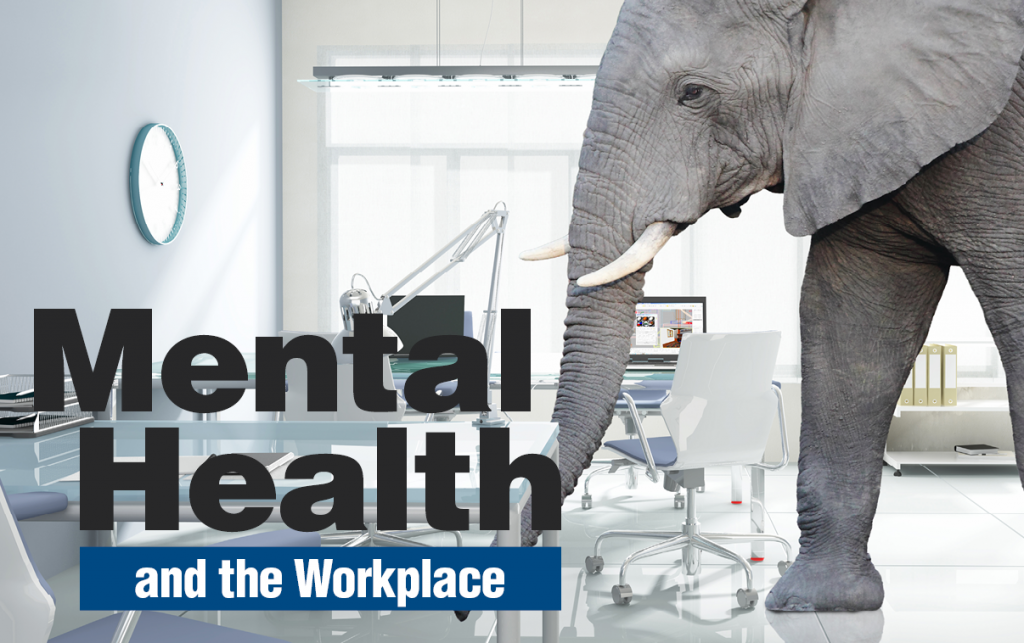Mental Health and the Workplace – The Voluntary Psychological Health and Safety Standards

People are the most important asset for any organization and human resources (HR) costs are often the biggest single budget item. Helping staff members deliver their best efforts and ensuring that appropriate support is available when needed are key to a positive work culture that leads to engaged, inspired and healthy employees who contribute more effectively. Achieving your organization’s goals depends on your employees and volunteers.
At the October 23rd CSAE Trillium Chapter Professional Development Event (PDX) members gathered to hear several presentations relating to HR and healthy workplaces,
including a session on the Voluntary Psychological Health and Safety Standards.
Voluntary Psychological Health and Safety Standards
There are almost seven million Canadians directly affected by mental illness, which is a higher number than those suffering from diabetes or heart disease. Psychological safety is the prevention of psychological or mental injury in the workplace. It involves taking precautions in the workplace to ensure that employees are not adversely affected psychologically. Typical forms of mental injury include depression and anxiety.
The Mental Health Commission of Canada (MHCC) has been active in developing a national framework to set a standard to promote psychological health and safety in the workplace. The standard is intended to provide guidelines for Canadian employers on how to prevent mental injury and promote psychological health in the workplace. The standard outlines a systematic approach to develop and sustain a psychologically healthy and safe workplace. The standard is intended for everyone, whether or not they live with a mental illness.
It is a voluntary standard. It is not a legal framework or regulation. It is meant as a guideline to assist employers to ensure their employees’ psychological well-being. The standard provides information to help organizations implement key components including scenarios for organizations of all sizes, opportunities for getting started, an audit tool, and other resources and references.
The Need for a Standard
Mental health problems and illnesses are the leading cause of short- and long-term disability in Canada and the toll on Canadian workers and workplaces is substantial. According to Sapna Mahajan, Director, Prevention and Promotion at the MHCC, “by age 40 approximately 50 percent of Canadians will have had experience with a mental illness or mental health problems…the incidence actually peaks between 18 and 40 which is a “prime” working time. Mental health problems and illnesses are the number one cause of disability in our country, accounting for 30 percent of disability claims and 70 percent of disability costs.”
Mahajan also noted that many employees who are experiencing mental health issues are still coming to work, but are not at their most productive and can be distracted, which can lead to mistakes and accidents.
The workplace plays a significant role in maintaining positive mental health. We spend the majority of our waking hours at work and we often bring our problems home. Creating a systemic and sustainable approach for psychological health and safety, similar in spirit to how physical health and safety is managed is becoming a business imperative. The business case is clear: a work environment that promotes good mental health is socially responsible, cost effective, and helps attract and keep good employees. The Standard is also important for risk management. Employers are increasingly being held legally responsible for psychological health and safety in the workplace.
Stigma
Stigma plays a big role in mental health in the workplace. “If someone is ill with a traditional illness like cancer, it is acknowledged in the workplace. If someone is off work due to depression it is treated like a ‘hidden secret’ and this contributes to the ongoing stigmatization of mental health,” Mahajan said. There is a need to address this stigma in the workplace in order to ensure that our employees and volunteers feel supported and are able to get the help they need. According to Mahajan, in non-profit organizations this needs to start at the Board level. it is important to get the Board to discuss the importance of psychological safety and one step towards reducing the stigma and opening the doors to open discussion is to adopt the Standard.
In an effort to address the stigma around mental health, the MHCC launched an initiative in 2009 called “Opening Minds.” It is the largest systematic effort in Canadian history focused on reducing stigma related to mental illness. It seeks to change Canadians’ behaviours and attitudes toward people living with mental illness to ensure they are treated fairly and as full citizens with opportunities to contribute to society like anyone else.
A number of programs across Canada are working on reducing stigma. Opening Minds has been evaluating more than 70 of these projects to identify those most effective at reducing stigma so they can be replicated across Canada. Evidence gathered through these evaluations will reveal best practices that will contribute to the development of anti-stigma toolkits and other resources.
How Can You Put the Standard Into Practice?
According to Mahajan, the top three things that we can do to address psychological health and safety and stigma in our workplaces/associations are:
- Download the Standard and read it (you can also access a two minute video that provides a great overview/summary of the Standard);
- Get leadership’s commitment to adopt the Standard and identify a champion for the “project” to ensure buy-in and engagement at all levels; and
- Access the free tools that are available to you online, look at your benefits program and talk to staff to see where the issues are, begin talking about mental health and make plans to address it in your association.
You can download and read the Standard and its annexes free of charge from the following websites:
CSA Group – www.shopcsa.ca
BNQ – www.bnq.qc.ca
MHCC – www.mentalhealthcommission.ca
MHCC also offers a Mental Health First Aid (MHFA) program. MHFA is the help provided to a person developing a mental health problem or experiencing a mental health crisis. Just as physical first aid is administered to an injured person before medical treatment can be obtained, MHFA is given until appropriate treatment is found or until the crisis is resolved.
The MHFA Canada program aims to improve mental health literacy, and provide the skills and knowledge to help people better manage potential or developing mental health problems in themselves, a family member, a friend or a colleague. This tool can be used to meet the voluntary requirements of the National Standard on Psychological Health and Safety in the Workplace.

